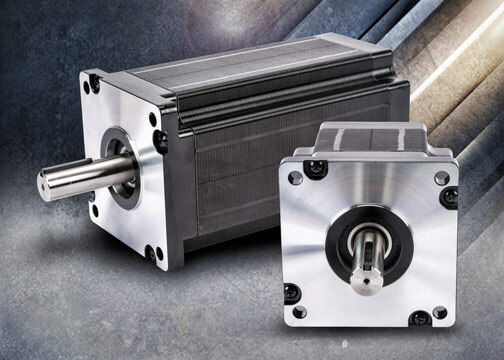Servo Motor Performance at Stepper Motor Prices
Servo Motor Performance at Stepper Motor Prices?
Robust new sensor system doing more with less
Enhancing production with — and for, less — is the standing order in today’s manufacturing world. Speeding up production while at the same time looking for ways, to cut, for example, energy costs, is a tricky equation with no single answer; where and how management goes about achieving that can take several paths. But in many manufacturing and countless other end-user environments, easily among the lowest-hanging energysucking targets remain NEMA inefficient, non-compliant electric motors, and the systems in which they are incorporated. So any news of a technological advance in that regard is always welcome, and that seems to be exactly what we have with the 2014 rollout of QuickSilver Controls Inc.’s patented Mosolver, i.e. — a servo motion actuator that, according to QuickSilver, “infuses a position feedback sensor into the very structure of a high pole count AC motor,” thus eliminating “the need for costly encoders and resolvers.”
And Don Labriola, the man behind the curtain whose baby is the Mosolver, offers additional reasons for considering the system a game-changer (Ed.’s Note: See also sidebar).
“I believe the Mosolver provides a rugged and cost-effective transition path to transfer up from steppers into Hybrid servo — same form factor. It not only prevents loss of steps, but allows true closed-loop control with a significant improvement in damping. Not only is it smaller than adding an encoder, it is inherently aligned, provides commutation information, and is robust.

position sensor coils that have been added
to a standard hybrid synchronous motor (All
photos courtesy QuickSilver Controls).
“The ruggedness of the polyamide sense circuit within the stator structure of the motor is able to reach or exceed the thermal/radiation/contaminant levels permitted by the motor itself. The flex circuit is stationary, being flexed only for installation. There are no encoder discs to be contaminated or moving parts — other than the motor rotor itself.”
And Labriola also explains that “the elimination of a separate feedback device reduces cost and size, eliminates alignment (and loss thereof) and greatly improves ruggedness of the system.” What’s more, by combining the motor and resolver into one package, the Mosolver enables a compact, inexpensive and robust closed-loop motion control.

stator. These coils intercept a portion of the flux between
the rotor and stator teeth, with the ripple current from
the chopper drive providing a time variation of the flux
— even when the motor is stationary. The decoded signal
provides sine and cosine signals.








